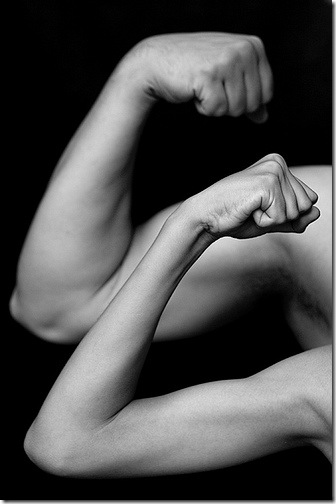Innervation
Without your nervous system, you couldn’t lift a blade of grass. To be strong, you need to have an efficient nervous system that innervates a large quantity of your muscle mass. Motor nerves end in the muscle at synaptic junctions called motor end plates. From there, multiple parallel muscle fibres are innervated by the dendrites of the neurons or nerve cells. The more efficient your nerve supply, the stronger you are. Think of a power lifter or an Olympic lifter. They are incredibly strong for the amount of muscle mass they have, compared to a bodybuilder. This is because they lift very heavy weights for low reps in a high number of sets. Lifting very heavy means you have to recruit more muscle fibres than if you lift a lower weight. As a result your nervous system becomes accustomed to recruiting all your muscle fibres in order to provide the necessary strength.
Cross-sectional area
The main component of strength is muscle mass, or to be more precise, the cross-sectional area of that mass. It is not the length of your muscles that affects your strength, it is how massive they are in cross-section. This is because the greater the cs-area, the greater the number of myofibrils contracting for you to lift a weight.
All skeletal muscle exerts the same force if it is recruited by the nervous system, so how strong you are will mostly depend on how much muscle you have, obviously so. By increasing the number of sarcomeres in the myofibrils found in muscle fibres, you increase the contractile strength of your muscles.
Leverage
Someone with long arms, and therefore long levers is technically at a disadvantage if their bone structure does not match. A person with long thin arms will not have the necessary connective tissue and musculature to overcome the poor leverages associated with their bones. Consider two bodybuilders that are identical, only one is six inches taller and all their levers are longer. They may have the same muscle mass, but the one with the shorter levers will be stronger because the weight they are moving through a range of motion is closer to their body and leverage is more efficient. If the person with the longer levers happened to have thicker bones, more muscle mass and more connective tissue, they will be stronger despite their mechanical disadvantage because they are a bigger person and will be proportionally stronger.
